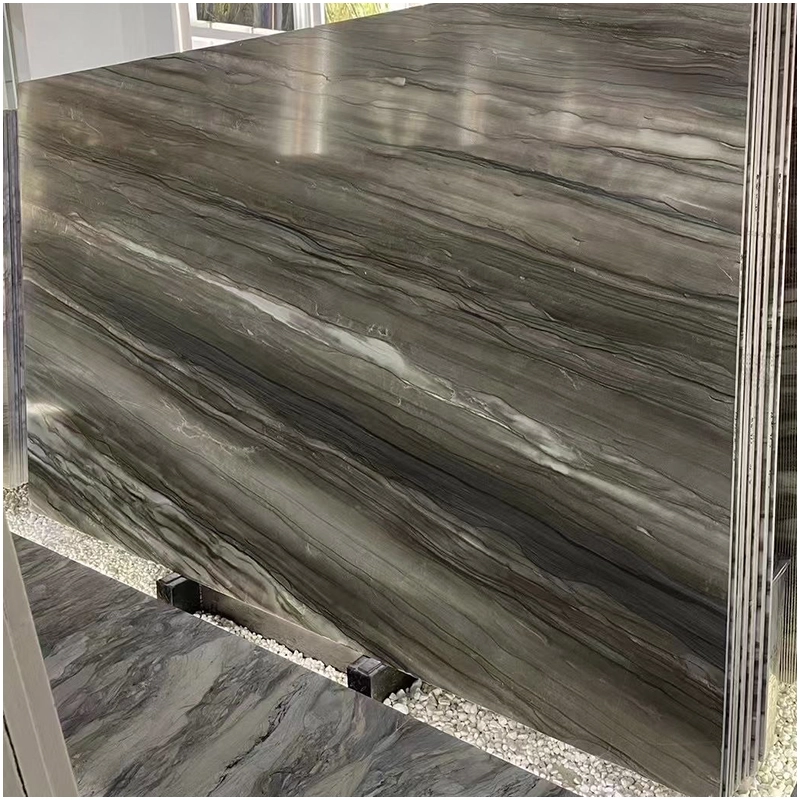In the world of interior design and home renovation, Marble Countertops have long stood as a symbol of timeless elegance, sophistication, and luxury. Whether used in kitchens, bathrooms, or bar tops, these stunning natural stone surfaces add value and aesthetic appeal to any space. But what exactly makes Marble Countertops so popular?
Beyond their visual charm lies a practical blend of durability, versatility, and unique character. This guide explores the many facets of Marble Countertops, from their benefits and care requirements to design trends and comparisons with other countertop materials.
Understanding the Benefits of Choosing Marble Countertops
Marble Countertops offer a wide array of benefits that extend beyond simple beauty. One of the primary Marble countertops benefits is their natural, one-of-a-kind veining that makes every slab unique. No two marble countertops are exactly alike, which appeals to homeowners looking for exclusivity in their home design.
Another compelling benefit is marble’s heat resistance. Especially in kitchens, where hot pots and pans are common, Marble kitchen countertops provide a surface that can handle higher temperatures without damage. In bathrooms, Marble bathroom countertops offer a spa-like feel that exudes serenity and refinement.
In terms of resale value, homes with Marble Countertops often attract more attention from potential buyers due to the luxurious reputation of the material. Additionally, marble is available in a wide range of tones—from classic white and soft gray to deep greens and blacks—allowing for versatile use in different decor styles, whether traditional or contemporary.

Learning How to Care for Marble Countertops Is Essential for Longevity
Proper maintenance is essential to preserving the beauty and function of Marble Countertops. Unlike engineered surfaces, marble is a porous stone that can absorb liquids and stain if not cared for correctly. A complete Marble countertop care guide includes daily cleaning, protective measures, and periodic sealing.
It’s important to clean marble surfaces using a soft cloth and pH-neutral cleanser. Avoid using acidic or abrasive cleaners, as these can etch the surface. Promptly wiping up spills—especially acidic substances like lemon juice, vinegar, or wine—helps prevent permanent stains.
Additionally, placing mats or trivets under hot cookware and coasters under glasses can minimize the risk of surface damage. These Marble countertop maintenance tips can go a long way in preserving the stone’s luster and ensuring its durability over the years.
Marble Countertops Combine Style with Functional Value
The timeless beauty of Marble Countertops is perfectly balanced by their practical value. With proper sealing and maintenance, marble surfaces can last for decades, making them a long-term investment. From spacious kitchen islands to compact vanity tops, marble adapts to any environment while adding a polished, upscale look.
Modern marble countertop styles now incorporate honed and leathered finishes, offering alternatives to the traditional polished shine. These finishes reduce the appearance of etching and are ideal for homeowners seeking a matte or textured aesthetic.
In contemporary interiors, marble pairs beautifully with minimalist cabinetry, matte black hardware, and metallic accents. At the same time, it can also serve as a neutral foundation in more eclectic or vintage-inspired settings. In short, Marble Countertops effortlessly combine high-end design with daily functionality, making them a favored choice in modern homes.
Comparing Marble Countertops to Other Materials Reveals Their Unique Appeal
While many materials are used for countertops—granite, quartz, laminate, concrete, and wood—Marble Countertops continue to stand out for specific reasons. A key aspect of the Marble countertop cost comparison is that while marble is generally more affordable than some premium quartz varieties, it offers natural beauty that synthetics struggle to replicate.
When compared to granite, marble is often seen as softer and more elegant, though it may require more maintenance. Quartz, on the other hand, is non-porous and easier to clean, but lacks the organic veining that gives marble its classic appeal.
Concrete and wood countertops provide rustic charm but don’t achieve the same refined finish or light-reflective properties. In terms of touch, marble remains cool, which is a unique feature for avid bakers who prefer working on a chilled surface.
Ultimately, each material has its own strengths, but Marble Countertops remain a top contender when it comes to achieving a combination of luxury, natural texture, and timeless design.

Discovering Top Trends in Marble Countertop Designs for Modern Interiors
Recent years have seen a resurgence in interest for Marble countertop design trends that break away from conventional looks. One popular trend is bookmatching, where two adjoining marble slabs mirror each other to create a symmetrical visual effect—especially stunning on large wall panels and kitchen islands.
Color-wise, designers are exploring deeper hues such as forest green, jet black, and blush pink marble. These bolder options add drama and character while retaining marble’s luxurious appeal. Veining patterns are also being used creatively. Instead of being a subtle feature, dramatic veining is now highlighted as the centerpiece of the design.
Integrating Marble Countertops with mixed materials—such as pairing them with reclaimed wood, brass fixtures, or glass cabinetry—adds depth and dimension to a space. The ongoing fusion of vintage and contemporary styles continues to influence modern marble countertop styles, giving designers and homeowners broader creative freedom.
Enhancing Durability with Marble Countertop Sealing and Maintenance
One of the most crucial steps in extending the life of Marble Countertops is regular sealing. Sealing fills the pores in the stone and prevents the absorption of liquids that can cause stains. Depending on the type of marble and usage level, sealing may be required every 6–12 months.
Professional application ensures even coverage and deep penetration into the stone, though many DIY kits are now available for those who prefer a hands-on approach. Following sealing, a layer of protective wax can offer an additional shield against spills and scratches.
When paired with other Marble countertop durability practices—such as avoiding sharp objects or dragging heavy items across the surface—sealing helps maintain the countertop’s structural integrity and visual brilliance over time.
Designing with Marble in Kitchens and Bathrooms Adds Luxury and Sophistication
Marble kitchen countertops are known for their ability to elevate the entire aesthetic of a cooking space. Whether used on expansive islands, backsplashes, or perimeter counters, marble introduces a sense of grandeur that few materials can match. Popular styles include white Carrara, Calacatta Gold, and Arabescato, each with unique veining and background tones.
In bathrooms, Marble bathroom countertops contribute to a clean, calm, and luxurious ambiance. They pair especially well with vessel sinks, under-mount basins, and brushed metal faucets. Beyond countertops, marble is also being used for integrated sinks, bathtub surrounds, and wall cladding for a seamless spa-inspired look.
Design flexibility is another key feature. Whether you’re working with a monochromatic theme or using bold color contrasts, Marble Countertops integrate effortlessly and often become the focal point of the room.
Balancing Cost and Value When Investing in Marble Countertops
Understanding the cost and value of Marble Countertops is essential for anyone planning a renovation or new construction. While marble is not the cheapest material on the market, its long-term value and visual impact often justify the expense. On average, Marble countertop cost comparison shows a wide range depending on the type, thickness, and origin of the stone.
Budget-friendly options such as Carrara marble offer an elegant look at a reasonable price, while rarer varieties like Calacatta or Statuario command premium prices. Installation costs, edge detailing, and additional features like backsplashes can further influence the final budget.
Despite the investment, marble’s durability, timeless appeal, and positive effect on home resale value make it a cost-effective choice in the long run. With proper maintenance and care, a marble countertop can retain its beauty for generations.

From timeless beauty to functional elegance, Marble Countertops continue to dominate the design world for all the right reasons. Their natural veining, luxurious finish, and adaptable style make them a preferred choice in kitchens, bathrooms, and beyond. By understanding their strengths, proper care techniques, and current design trends, homeowners can make informed decisions that enhance both form and function.
Choosing Marble Countertops means embracing a material that’s been revered for centuries—yet continues to evolve with modern innovations in sustainability, sealing technology, and design flexibility. Whether you’re inspired by classic white marble or adventurous enough to try dramatic colors and finishes, marble offers something for every aesthetic.
While marble does require care and an upfront investment, the returns in visual impact, home value, and daily satisfaction are immense. With regular sealing, mindful use, and a clear design vision, your Marble Countertops will not only stand the test of time—they’ll make a powerful statement in your home for years to come.For example: “Want to learn more about purchasing Marble Countertops? Contact us now to get a quote!”







